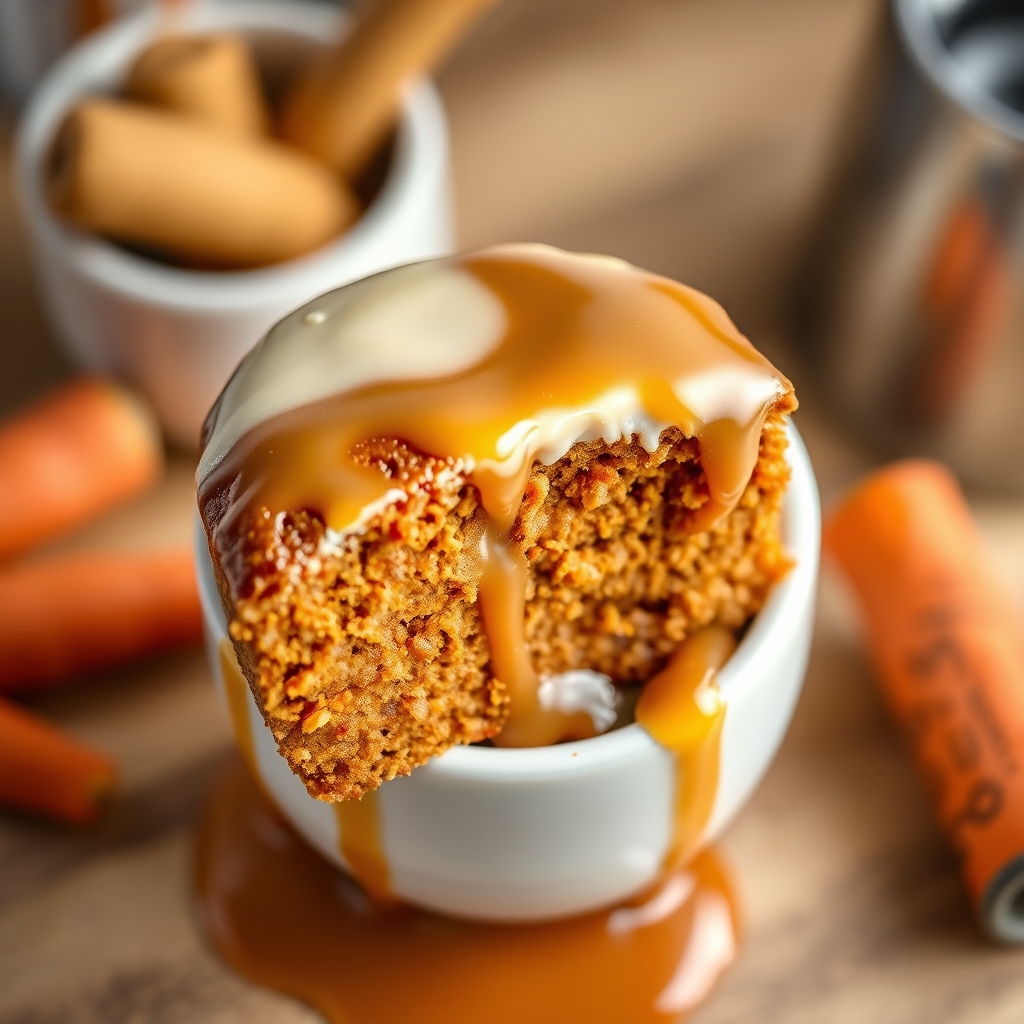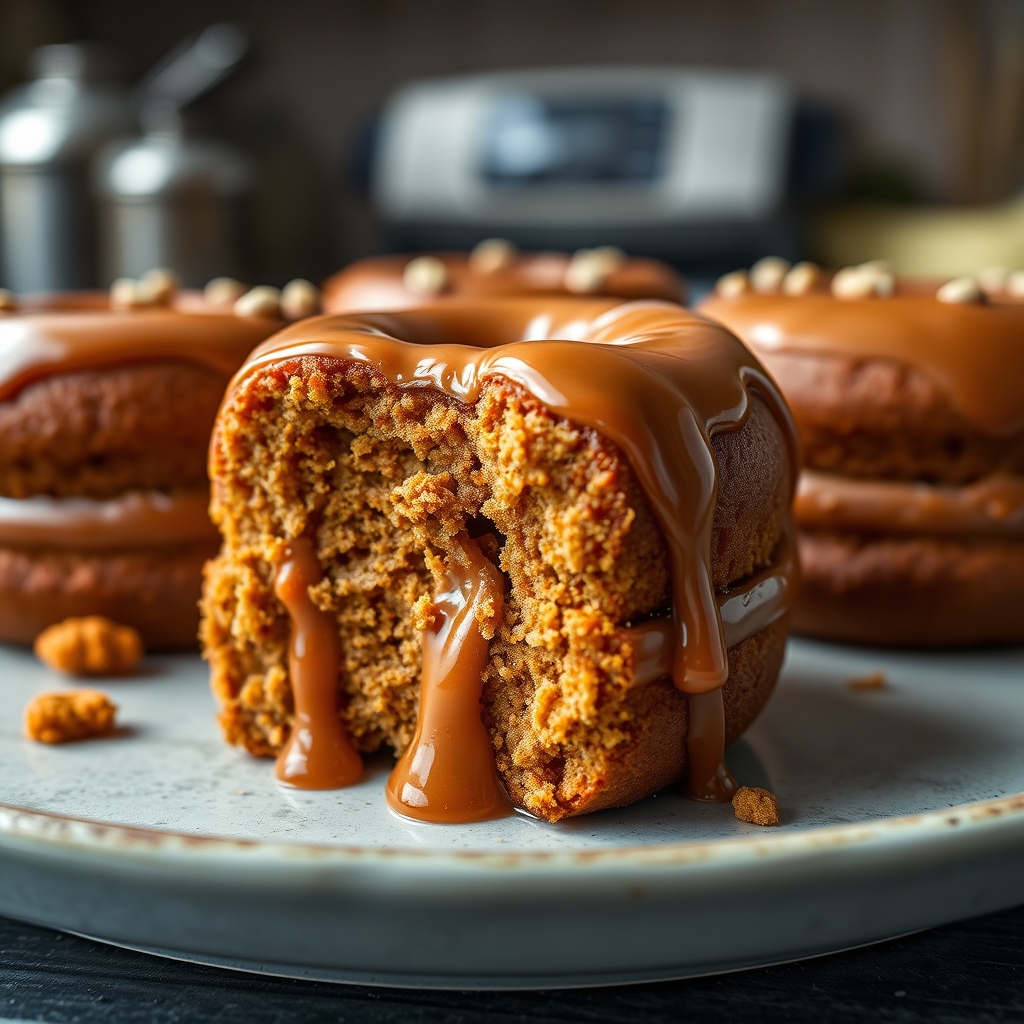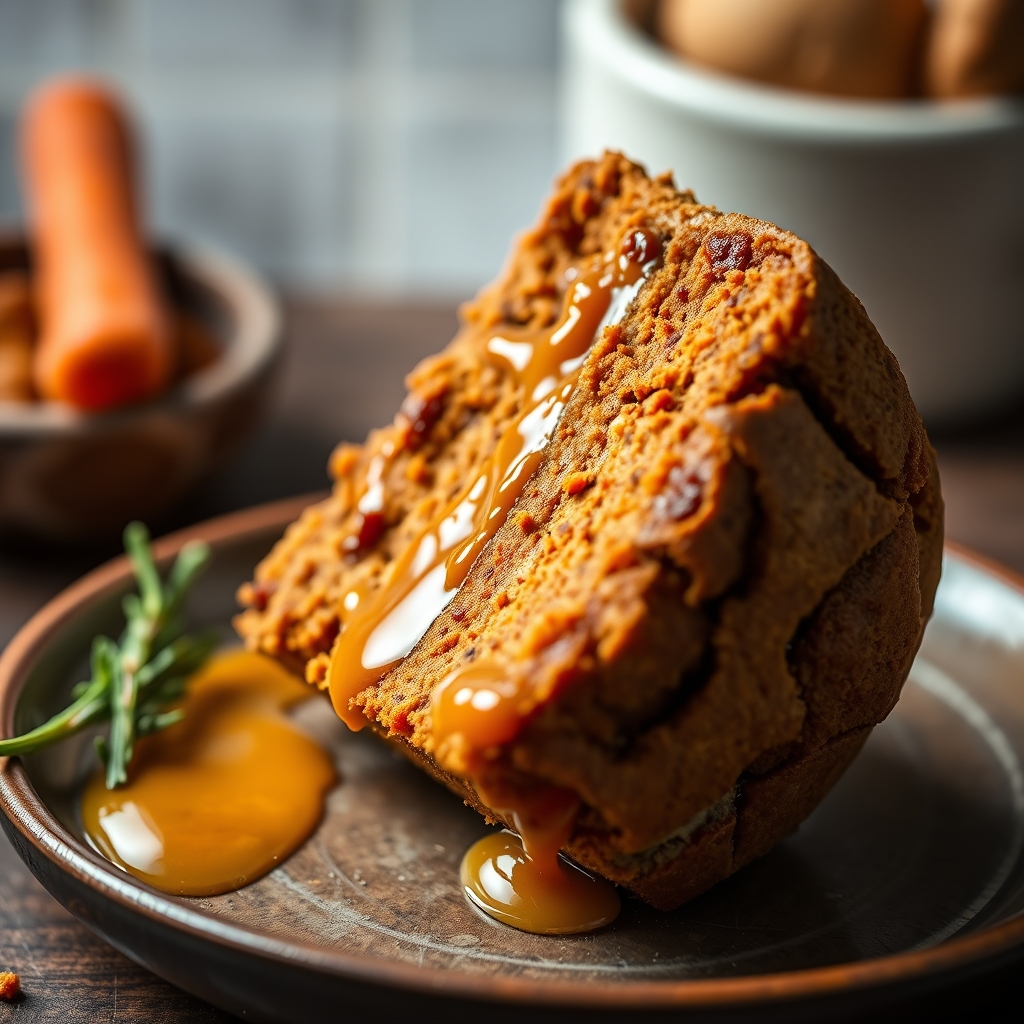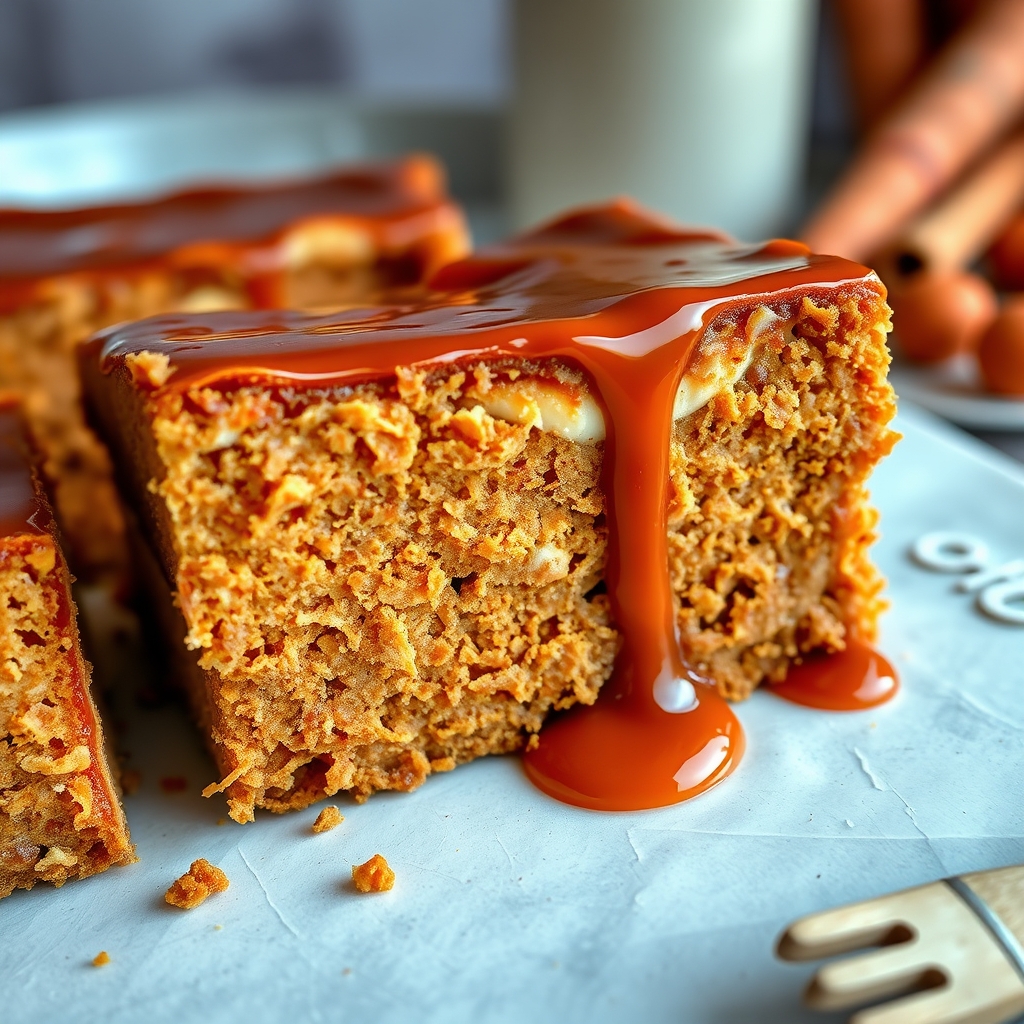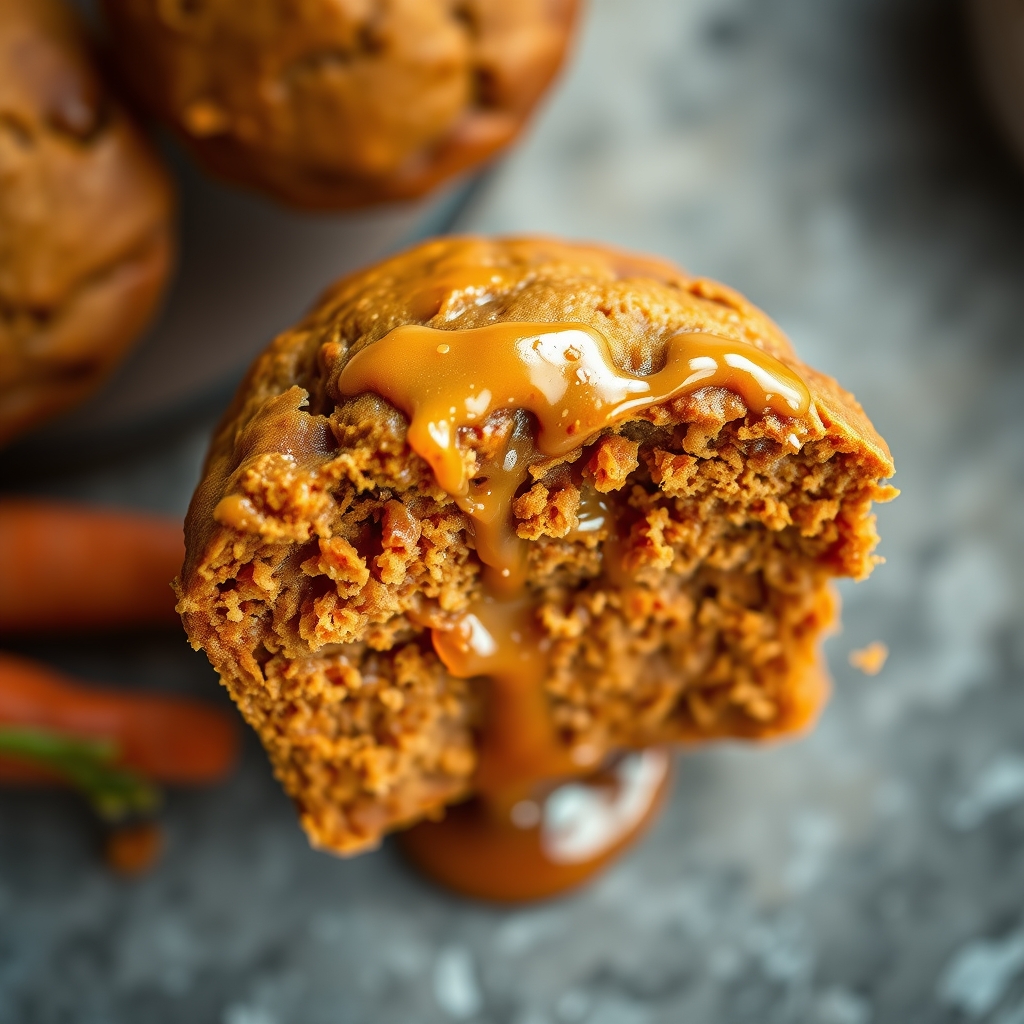Low Carb Carrot Cake Mug Cake
There’s something undeniably comforting about carrot cake—the warm spices, the tender crumb, and that irresistible cream cheese frosting. But what if you could enjoy all those flavors in a fraction of the time, with none of the guilt? Enter this Low Carb Carrot Cake Mug Cake, a single-serving dessert that’s ready in minutes and packed with wholesome ingredients. Whether you’re craving a quick treat or need a last-minute dessert that fits your keto or low-carb lifestyle, this mug cake is here to save the day.
Why You’ll Love This Recipe
If you’re on the fence about trying this recipe, let me give you a few reasons why it’s about to become your new favorite:
- Quick and Convenient: From mixing bowl to mug, this carrot cake mug cake cooks in just 90 seconds. It’s perfect for those moments when a sweet craving strikes but you don’t want to spend hours in the kitchen.
- Low Carb and Keto-Friendly: Made with almond flour and a sugar substitute, this recipe keeps carbs in check while delivering all the classic carrot cake flavors you love.
- Perfect Portion Control: No more worrying about leftovers tempting you—this single-serving dessert satisfies without overindulging.
- Packed with Nutrients: Thanks to shredded carrots, almond flour, and eggs, this mug cake offers protein, fiber, and vitamins, making it a smarter dessert choice.
- Endlessly Customizable: Add nuts, swap spices, or drizzle with sugar-free frosting—this recipe is a blank canvas for your creativity.
Ingredients Breakdown
Let’s take a closer look at the key ingredients that make this low carb carrot cake mug cake so delicious and nutritious:
- Almond Flour: A low-carb alternative to traditional flour, almond flour adds a nutty richness and moist texture to the cake.
- Shredded Carrots: The star of the show! Carrots bring natural sweetness, moisture, and a boost of vitamin A.
- Egg: Acts as a binder, ensuring the cake holds together while adding protein.
- Granulated Sweetener: Whether you prefer erythritol, monk fruit, or stevia, a sugar substitute keeps this dessert low in carbs.
- Cinnamon and Nutmeg: These warming spices give the mug cake that classic carrot cake flavor.
- Butter or Coconut Oil: Adds richness and helps create a tender crumb.
- Baking Powder: A pinch of this ensures the cake rises beautifully in the microwave.
How to Make Low Carb Carrot Cake Mug Cake
Ready to whip up this easy dessert? Follow these simple steps for a perfectly fluffy and flavorful mug cake every time.
- Prepare Your Mug: Choose a microwave-safe mug that holds at least 12 ounces to prevent overflow. Lightly grease it with butter or coconut oil.
- Mix Dry Ingredients: In a small bowl, whisk together ¼ cup almond flour, 1 tablespoon granulated sweetener, ½ teaspoon cinnamon, a pinch of nutmeg, and ¼ teaspoon baking powder.
- Add Wet Ingredients: Stir in 1 beaten egg, 1 tablespoon melted butter (or coconut oil), and ¼ teaspoon vanilla extract until well combined.
- Fold in Carrots: Gently mix in 2 tablespoons of finely shredded carrots. For extra texture, you can add a tablespoon of chopped walnuts or pecans.
- Microwave: Pour the batter into your prepared mug and microwave on high for 60-90 seconds. Start checking at 60 seconds—the cake should be firm but still moist.
- Cool and Top: Let the mug cake cool for a minute or two before adding a dollop of sugar-free cream cheese frosting or a sprinkle of cinnamon.
Pro Tips for the Best Results
Want to take your low carb carrot cake mug cake to the next level? Try these expert tips:
- Use Freshly Shredded Carrots: Pre-shredded carrots can be dry. For the best texture, shred a whole carrot and pat it lightly with a paper towel to remove excess moisture.
- Don’t Overmix: Stir the batter just until combined to avoid a dense or rubbery texture.
- Adjust Sweetness: Taste the batter before microwaving and add more sweetener if needed, keeping in mind that toppings like frosting will add extra sweetness.
- Experiment with Spices: Add a pinch of ginger or cloves for a more complex spice profile.
- Try a Toaster Oven: If you prefer a more traditional baked texture, cook the mug cake in a toaster oven at 350°F for 12-15 minutes.
Variations and Substitutions
This recipe is incredibly flexible. Here are some delicious ways to switch it up:
- Dairy-Free: Replace butter with coconut oil and use a dairy-free cream cheese alternative for frosting.
- Nut-Free: Swap almond flour for sunflower seed flour or coconut flour (note: coconut flour absorbs more liquid, so you’ll need to adjust quantities).
- Add-Ins: Stir in unsweetened coconut flakes, raisins (if carbs allow), or a tablespoon of crushed pineapple for extra sweetness.
- Chocolate Twist: Add a teaspoon of cocoa powder for a chocolate carrot cake hybrid.
- Protein Boost: Mix in a scoop of vanilla or unflavored protein powder for an extra protein kick.
What to Serve With It
While this mug cake is delightful on its own, here are a few pairing ideas to make it even more special:
- Whipped Cream: A dollop of sugar-free whipped cream adds a light, airy contrast.
- Vanilla Ice Cream: For a decadent treat, serve with a scoop of low carb vanilla ice cream.
- Hot Beverages: Pair with a cup of spiced chai tea, black coffee, or golden milk for a cozy dessert experience.
- Fresh Berries: A handful of raspberries or strawberries adds a refreshing tartness.
How to Store and Reheat
Though this mug cake is best enjoyed fresh, here’s how to handle leftovers:
- Storage: If you have leftovers (unlikely!), cover the mug with plastic wrap and refrigerate for up to 2 days.
- Reheating: Microwave for 20-30 seconds to warm it up. For a fresher texture, you can also reheat it in a toaster oven at 300°F for 5 minutes.
- Freezing: Wrap the cooled cake in plastic and freeze for up to a month. Thaw in the fridge overnight before reheating.
Frequently Asked Questions (FAQs)
Can I make this without a microwave?
Yes! Bake it in a toaster oven or conventional oven at 350°F for 12-15 minutes, or until a toothpick comes out clean.
Why did my mug cake turn out dry?
Overcooking is the most common culprit. Microwave times vary, so start checking at 60 seconds. If using coconut flour, you may need to add an extra tablespoon of liquid.
Can I use flax eggs instead of regular eggs?
Yes, a flax egg (1 tablespoon ground flaxseed + 3 tablespoons water) should work as a binder, though the texture may be slightly denser.
Is this recipe gluten-free?
Absolutely! Almond flour is naturally gluten-free, making this a safe choice for those with gluten sensitivities.
Can I double the recipe?
Yes, but you’ll need a larger mug or ramekin to prevent overflow. Alternatively, make two separate mug cakes.
Final Thoughts
There you have it—a quick, easy, and delicious low carb carrot cake mug cake that’s perfect for satisfying your sweet tooth without derailing your healthy eating goals. Whether you’re new to low carb baking or a seasoned pro, this recipe is a must-try. The next time you’re craving something warm, spiced, and just a little bit indulgent, remember that dessert is only 90 seconds away. Happy baking!
Print
Low Carb Carrot Cake Mug Cake
Description
A quick and delicious low-carb carrot cake mug cake that’s perfect for satisfying your sweet tooth without the guilt. Made with almond flour and natural sweeteners, this single-serving dessert is ready in minutes!
Ingredients
For the Crust:
- For the cake:
- 1/4 cup almond flour
- 1 tablespoon coconut flour
- 1 tablespoon granulated erythritol (or preferred sweetener)
- 1/2 teaspoon cinnamon
- 1/4 teaspoon baking powder
- Pinch of salt
- 1 tablespoon grated carrot (packed)
- 1 tablespoon melted coconut oil (or butter)
- 1 large egg
- 1/4 teaspoon vanilla extract
- For the frosting (optional):
- 1 tablespoon cream cheese (softened)
- 1/2 teaspoon powdered erythritol
- 1/2 teaspoon heavy cream (or almond milk)
Instructions
1. Prepare the Crust:
- 1. In a microwave-safe mug, whisk together almond flour, coconut flour, erythritol, cinnamon, baking powder, and salt.
- 2. Add grated carrot, melted coconut oil, egg, and vanilla extract. Mix until well combined.
- 3. Microwave on high for 60-90 seconds (until center is set). Let cool 1 minute.
- 4. For frosting: Beat cream cheese, powdered erythritol, and cream until smooth. Spread over cooled cake.
Notes
For nut-free version, replace almond flour with sunflower seed flour. Adjust sweetness to taste. Cake continues to set as it cools.
